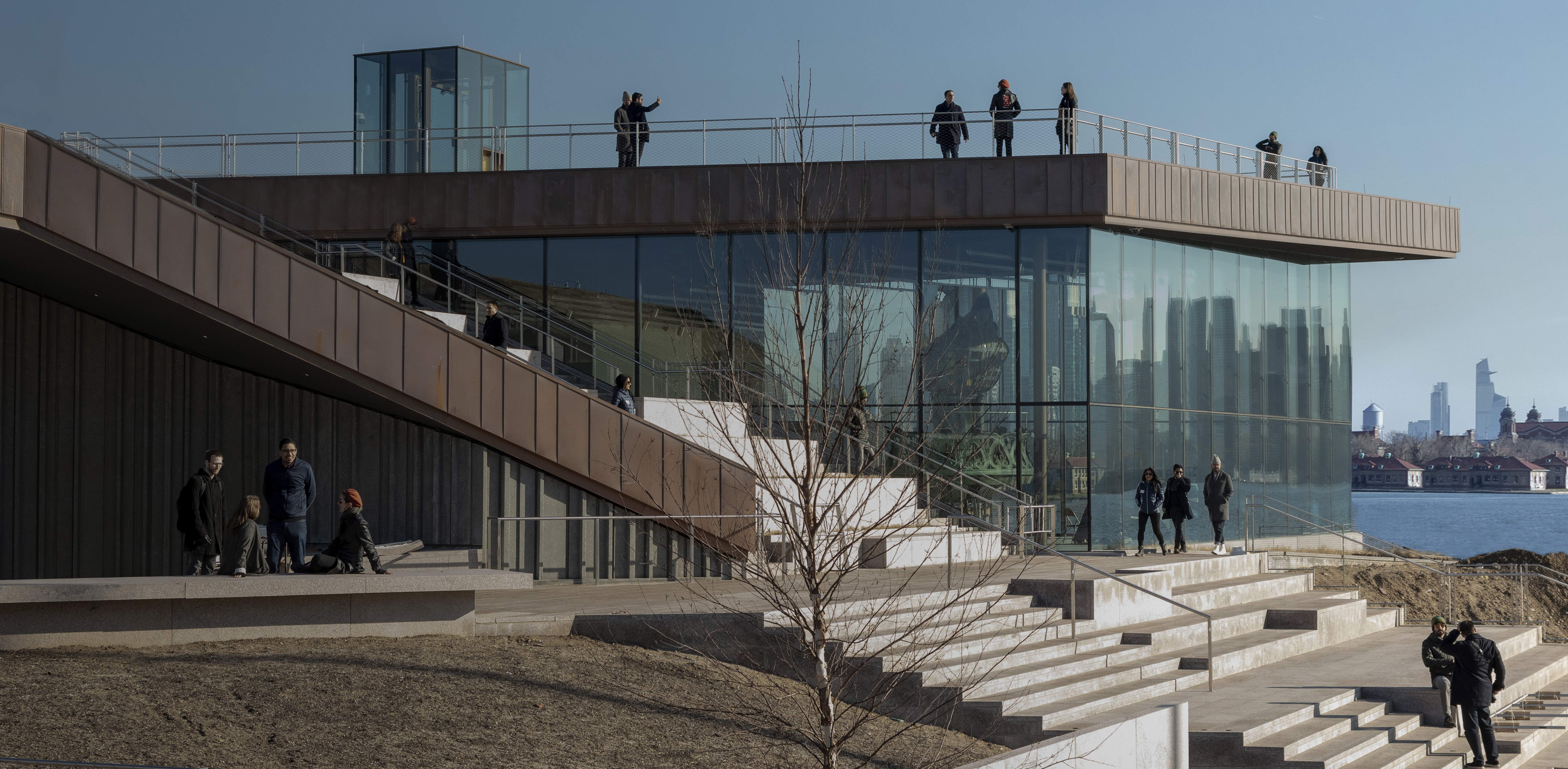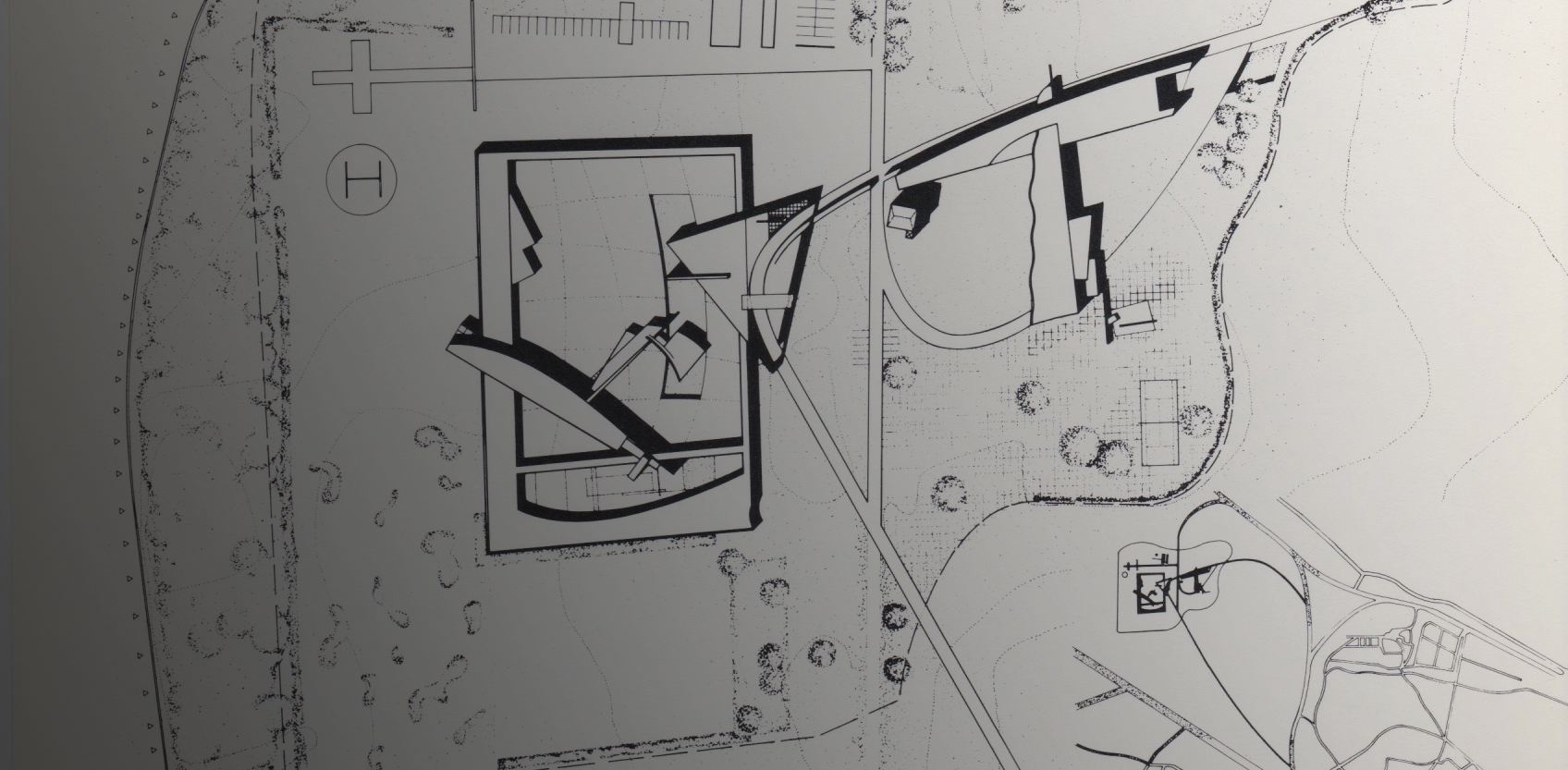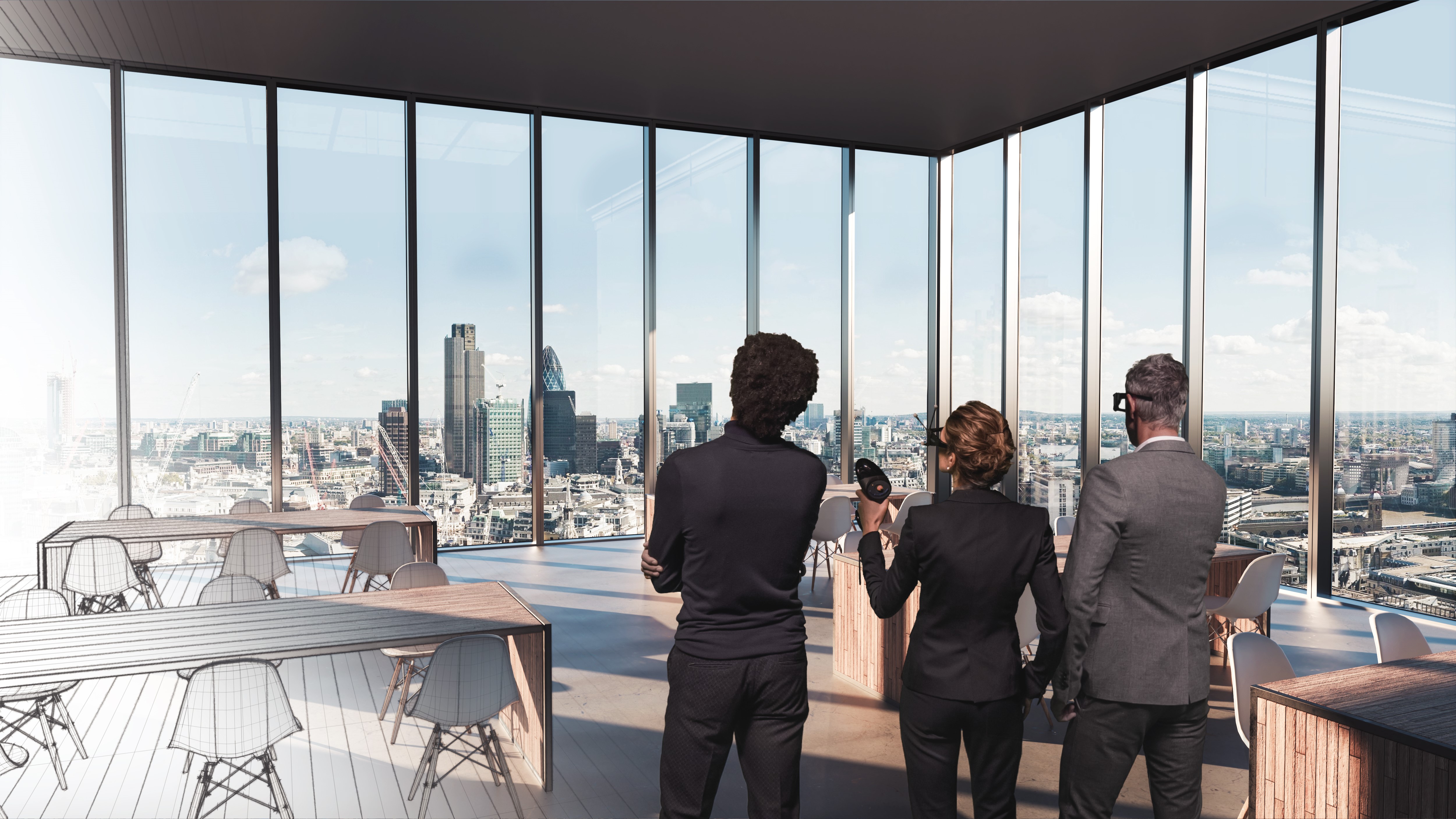When tasked with designing the new Statue of Liberty Museum, FXCollaborative faced an immense challenge: How do you conceive a building fit to tell the story of another structure with almost unparalleled cultural significance? Traveling to Liberty Island last week for a preview tour of this new museum, the answer became apparent even before disembarking the ferry.
FXCollaborative has carefully crafted an architecture that is soft, subtle and subservient to the monument for which it is dedicated. Sited at the north-western end of the island, the 26,000-square-foot museum appears to rise out of the park, surrounded by and partly covered in native vegetation.
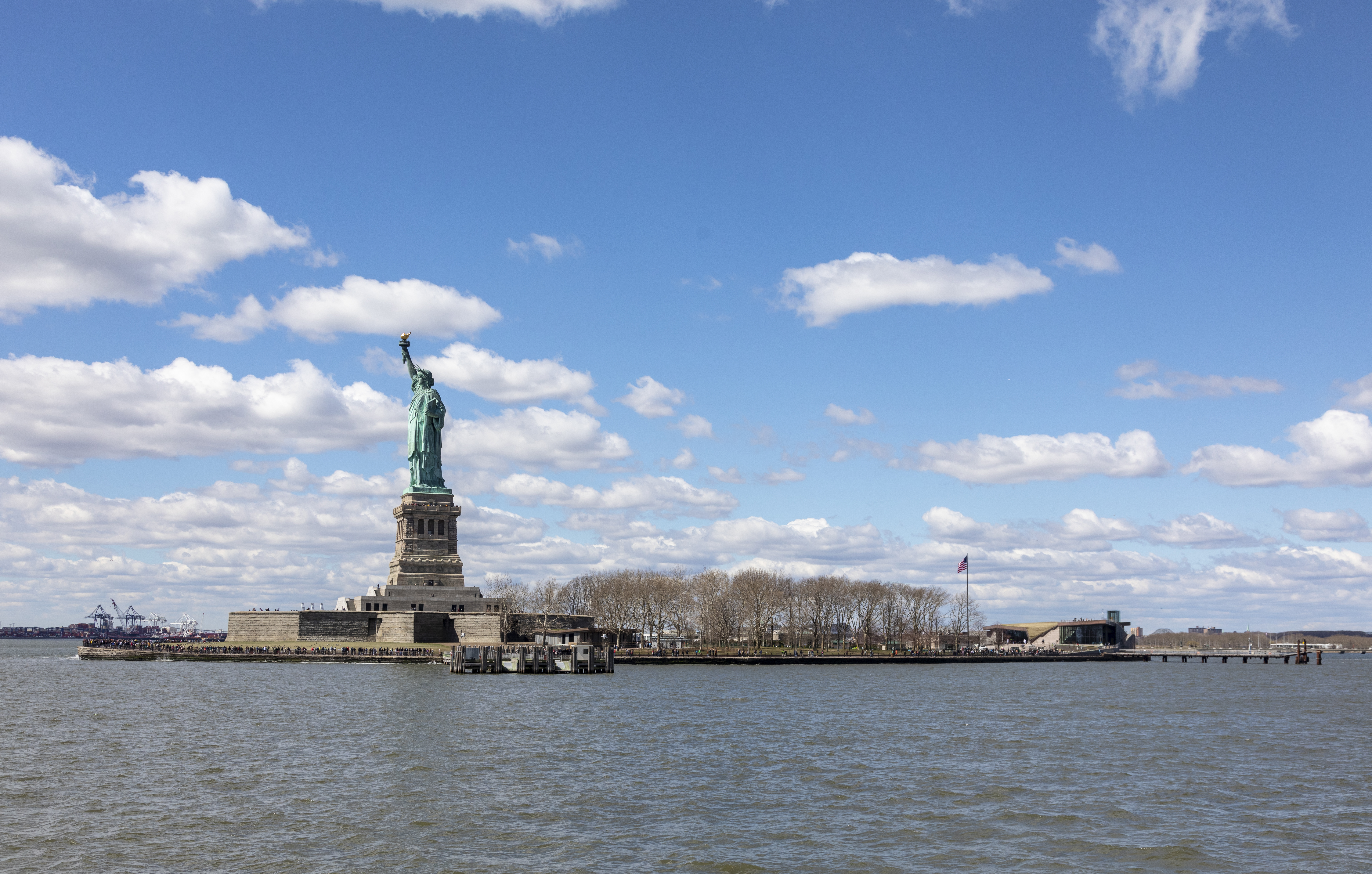
Statue of Liberty Museum by FXCollaborative, New York NY, Architect; photo by David Sundberg. The museum is visible on the right.
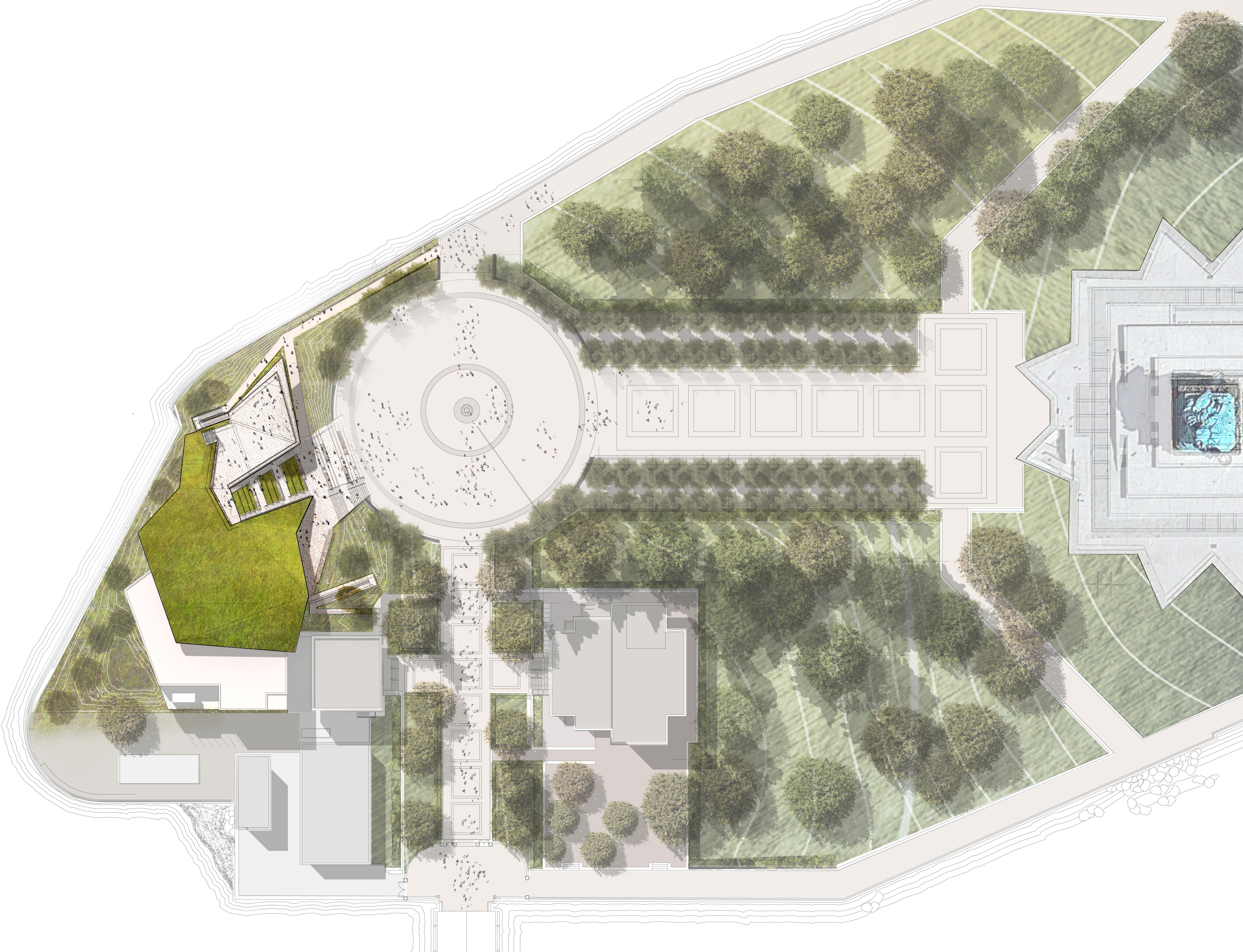
Site plan with the Statue of Liberty Museum highlighted; drawing courtesy FXCollborative
The building’s meadow-covered roof and broad glass entrance feels appropriately accessible for those coming to learn about America’s original symbol of inclusivity. “From the start,” explained project architect Nicholas Garrison, “the Statue of Liberty Museum was conceived as a garden pavilion that would create a joyous and welcoming new experience for all visitors to the island, regardless of age, nationality, or ethnicity.”
Material homages to the Statue run throughout the museum’s exterior. A ribbon of copper cladding follows the angled edge of the building — it will turn green over time, matching the Statue’s famous patina. The museum is raised up to avoid damage from storm water in the future, yet feels grounded thanks to the use of solid materials such as precast concrete and Stony Creek Granite — the same type used for the Statue of Liberty’s pedestal.
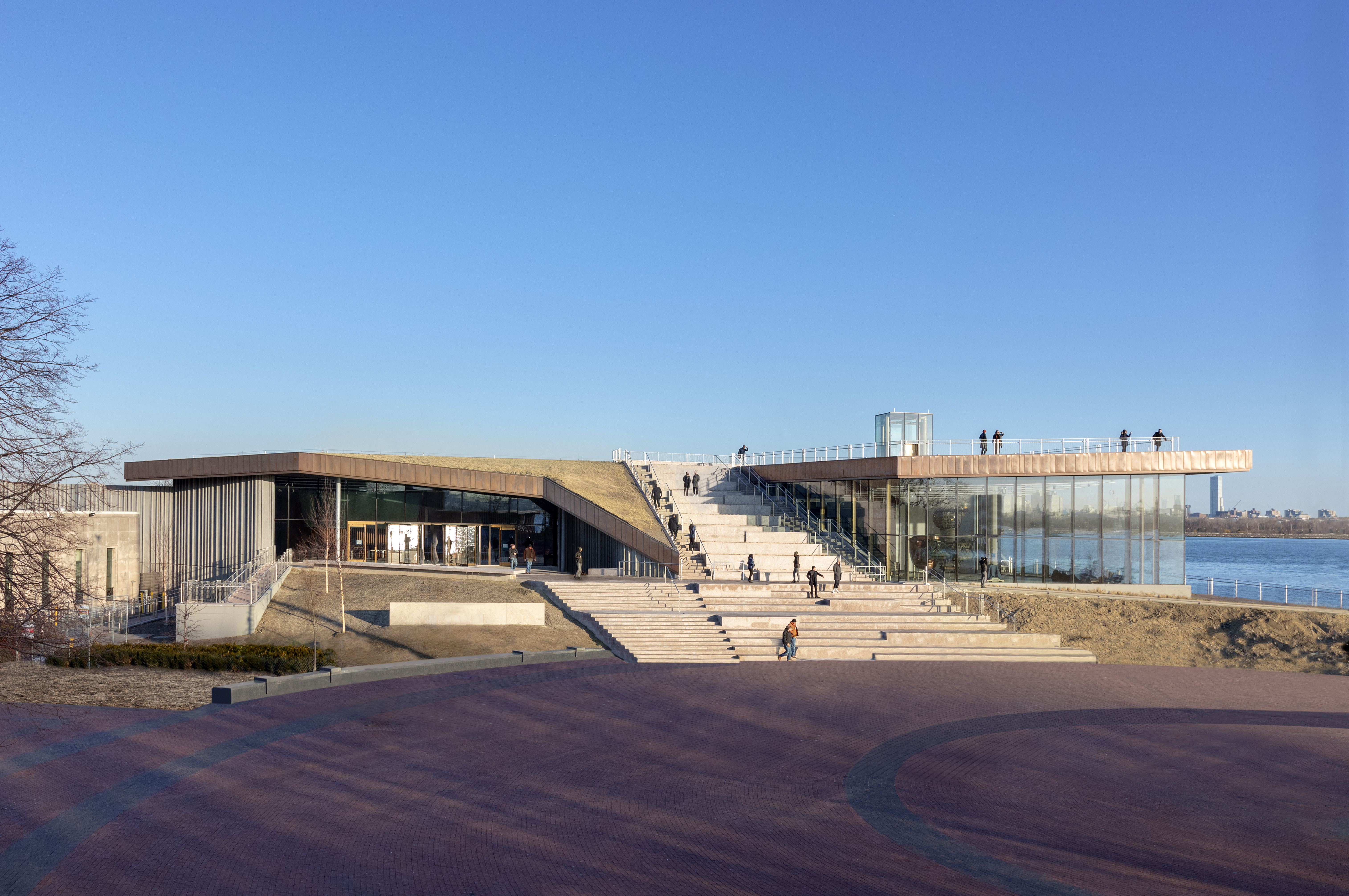
Statue of Liberty Museum by FXCollaborative; photo by David Sundberg
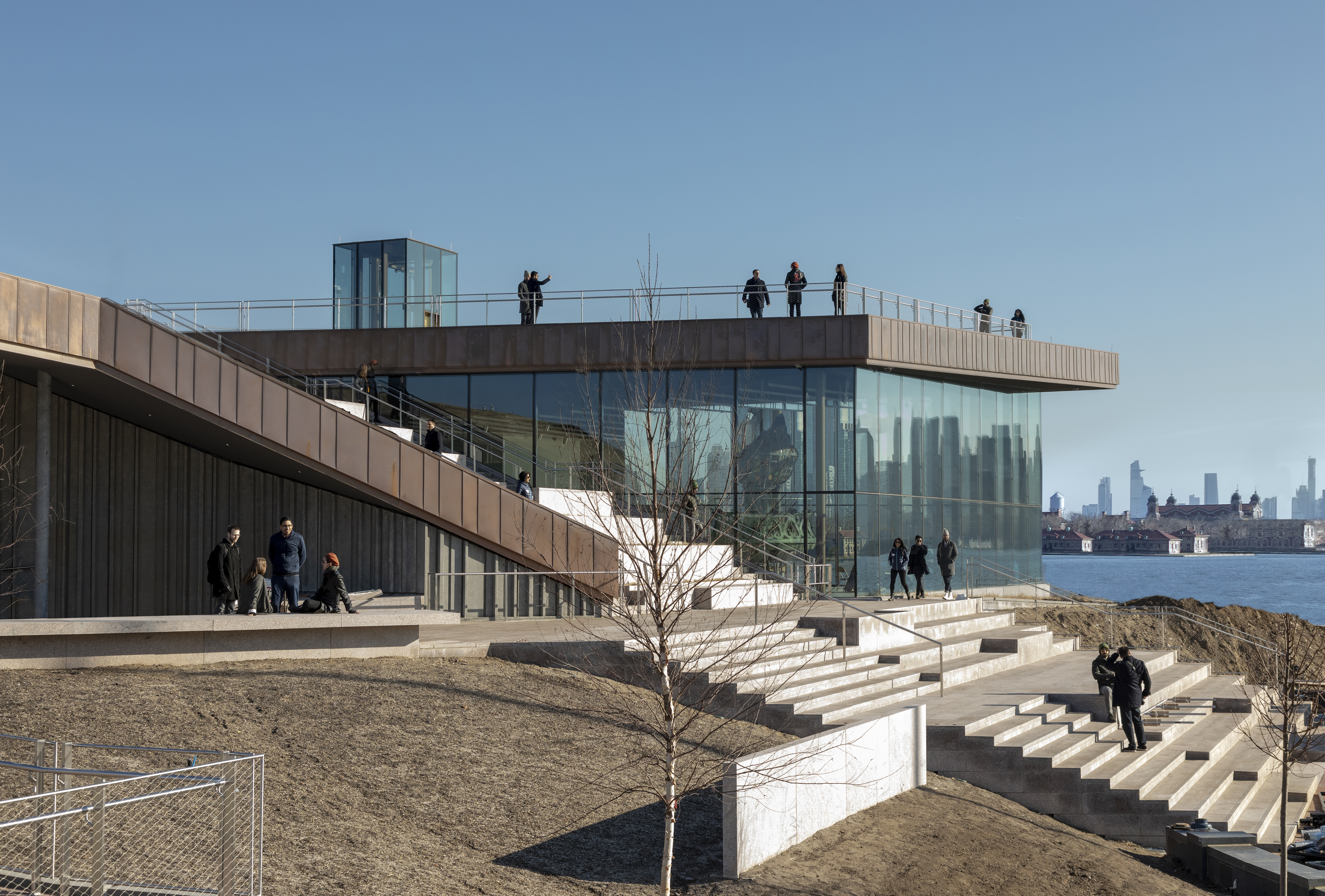
Statue of Liberty Museum by FXCollaborative; photo by David Sundberg
Inside, a series of powerful films tell the story of the Statue’s conception in Paris, all the way through to its construction in New York’s Upper Bay in 1886. Installations then highlight Liberty’s design iterations, including working models and drawings that show just how different Lady Liberty looked before dozens of iterations were made. Full-scale plaster casts and fragments of copper also reveal the ingenious techniques used to create the giant Statue’s flowing robe.
Finally, a gently sloping ceiling rises to its highest point to accommodate the museum’s most awe-inspiring exhibit: The Statue of Liberty’s original torch has been cleaned up, relit and relocated here, bringing home the immense scale of the monument. The torch is housed within the museum’s most transparent section, surrounded on three sides by 22-foot-high, bird-safe glass walls.
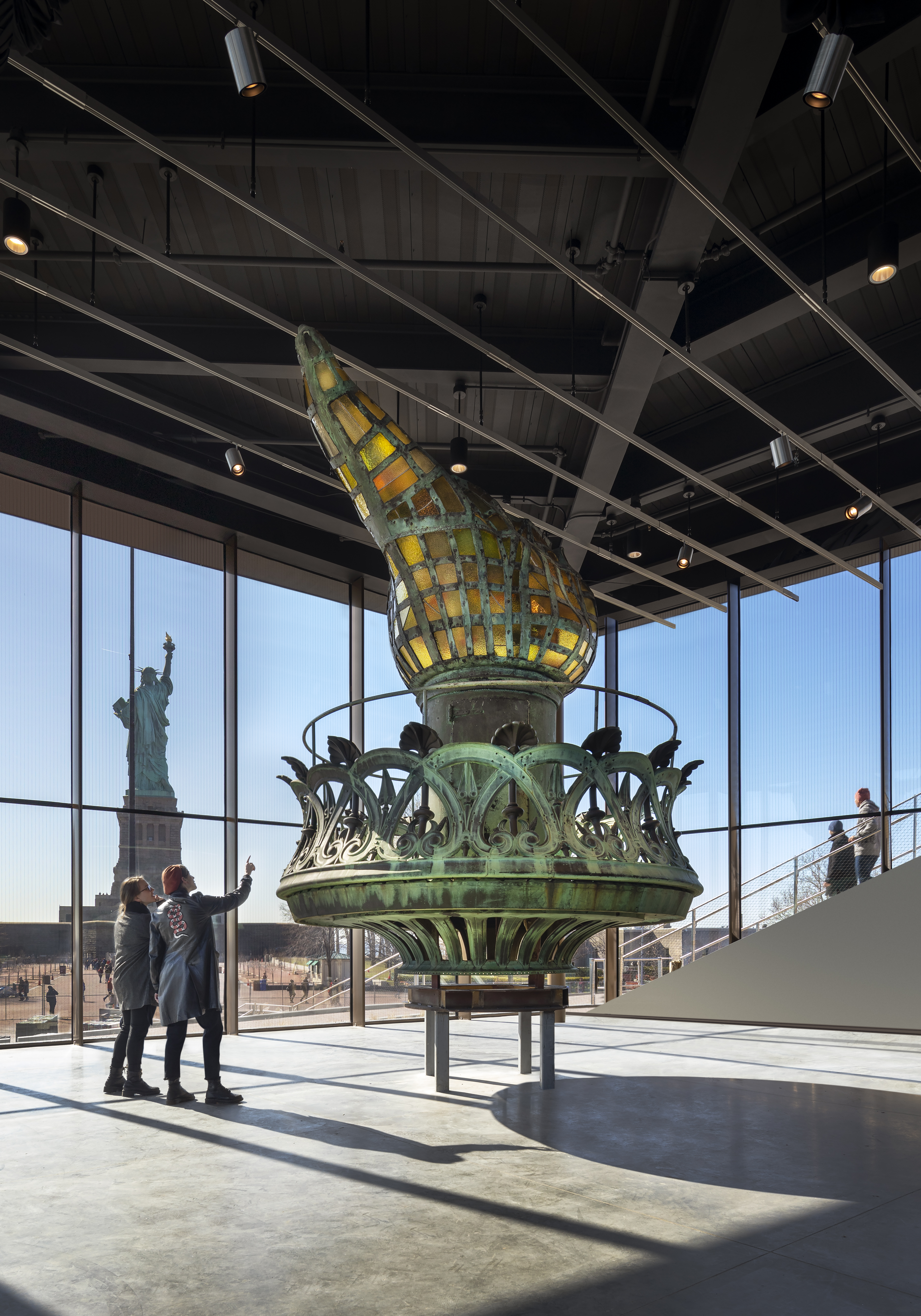
Statue of Liberty Museum by FXCollaborative; photo by David Sundberg
At this key point in the journey, the building acts as a lens — both literally and metaphorically — that offers us a chance to see a familiar icon from a new perspective. This is a tried-and-tested architectural move. Similar strategies were deployed, though in very different ways, for Bernard Tschumi Architects’ Acropolis Museum in Athens and Henegan Peng Architects’ Giants Causeway Visitor Centre in Northern Ireland.
Each of these buildings forms a frame through which to view an extraordinary fragment of history, be it manmade or natural. In the case of the Statue of Liberty Museum, this concept is taken a step further: Its roof, an inhabitable terrace, acts as a viewing gallery for the entire of lower Manhattan. Climbing the granite steps to stand directly above the torch room, a historic panorama awaits.
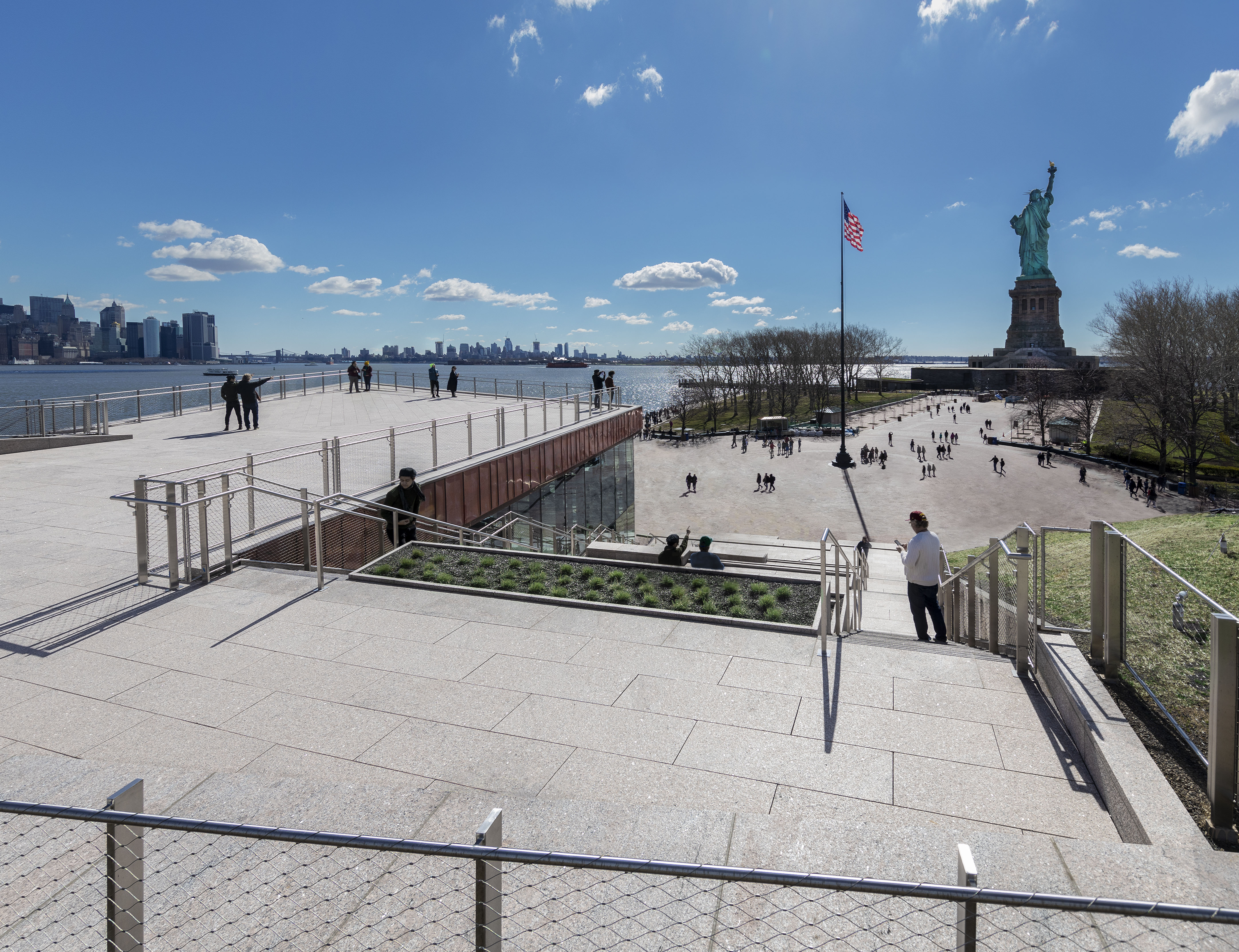
Statue of Liberty Museum by FXCollaborative; photo by David Sundberg
To the left, we glimpse One World Trade Center and the rest of the world’s most recognizable skyline across the water. To the right, we find ourselves not only looking at Lady Liberty, but gazing with her towards the harbor beyond. It is an ideal moment to reflect upon the original meaning of the Statue, a shining beacon of hope and excitement for those immigrants arriving by boat just a few decades ago.
Herein lies the success of FXCollaborative’s museum: The building does not distract from the story that makes this tiny island so significant. Rather, it illustrates how architecture can amplify a story, providing a platform upon which history can continue to be built. These are qualities that would undoubtedly be appreciated by the artists and engineers that constructed Lady Liberty herself.
The Statue of Liberty Museum opens to the public on May 16th 2019. Access to the Museum is free with purchase of a ferry ticket to visit Liberty Island and Ellis Island.
Hero image: Statue of Liberty Museum by FXCollaborative; photo by David Sundberg
